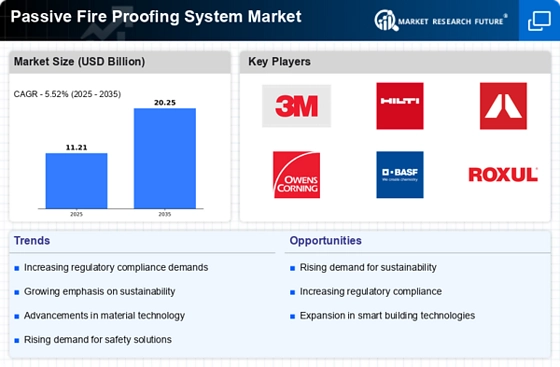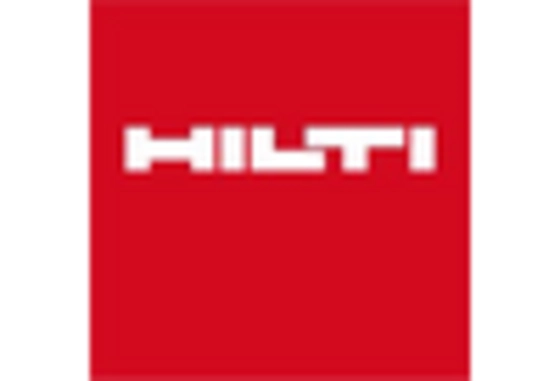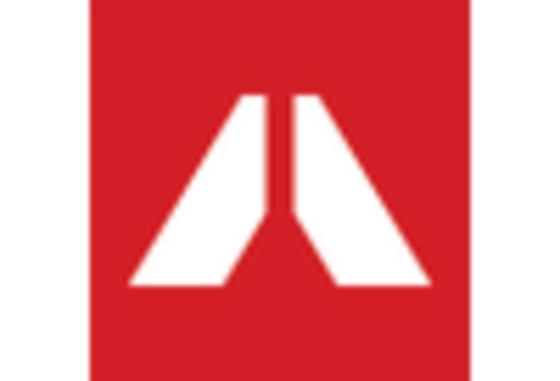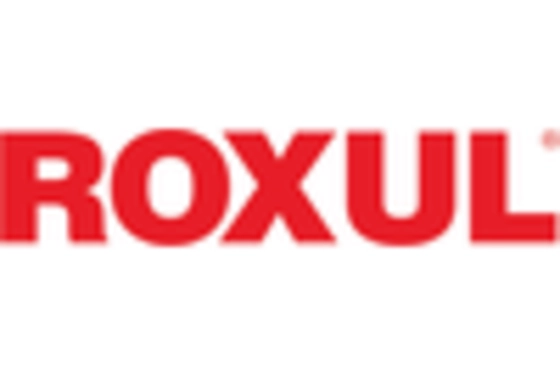Growth in Industrial Sector
The growth of the industrial sector is poised to significantly impact the Passive Fire Proofing System Market. As industries expand and new facilities are established, the need for robust fire protection measures becomes increasingly critical. Manufacturing plants, warehouses, and processing facilities are particularly vulnerable to fire hazards, necessitating the implementation of effective passive fireproofing solutions. Market trends indicate that investments in industrial infrastructure are on the rise, which is likely to drive demand for passive fire protection systems. This growth presents opportunities for manufacturers and suppliers within the Passive Fire Proofing System Market to cater to the specific needs of the industrial sector, ensuring compliance with safety regulations and protecting valuable assets.
Rising Awareness of Fire Safety
There is a noticeable increase in awareness regarding fire safety among stakeholders, which is likely to drive the Passive Fire Proofing System Market. This heightened awareness stems from various incidents and the subsequent emphasis on safety protocols in both residential and commercial settings. As organizations and individuals recognize the importance of fire prevention, the demand for passive fire protection solutions is expected to rise. Market data indicates that investments in fire safety measures have surged, with many companies adopting comprehensive fire safety strategies. This trend suggests that the Passive Fire Proofing System Market will continue to expand as more entities prioritize the implementation of effective fireproofing solutions to mitigate risks and enhance safety standards.
Stringent Regulatory Frameworks
The implementation of stringent regulatory frameworks concerning fire safety is a crucial driver for the Passive Fire Proofing System Market. Governments and regulatory bodies are increasingly enforcing regulations that mandate the use of fireproofing systems in various types of constructions. These regulations aim to enhance safety standards and reduce the risk of fire-related incidents. As compliance becomes a necessity, construction companies are compelled to invest in passive fire protection solutions. Market data suggests that the enforcement of these regulations is likely to lead to a steady increase in demand for passive fireproofing systems, as stakeholders seek to adhere to legal requirements and ensure the safety of occupants and property.
Increasing Construction Activities
The rise in construction activities across various sectors appears to be a primary driver for the Passive Fire Proofing System Market. As urbanization accelerates, the demand for residential, commercial, and industrial buildings continues to grow. This trend is likely to increase the need for effective fire protection solutions. According to recent data, the construction sector is projected to expand significantly, with investments in infrastructure and real estate reaching unprecedented levels. Consequently, the Passive Fire Proofing System Market is expected to benefit from this surge, as builders and developers prioritize safety measures to comply with stringent regulations and ensure the protection of assets and lives. The integration of passive fire protection systems in new constructions is becoming a standard practice, further propelling market growth.
Technological Innovations in Fireproofing Materials
Technological advancements in fireproofing materials are emerging as a significant driver for the Passive Fire Proofing System Market. Innovations such as intumescent coatings, fire-resistant boards, and advanced insulation materials are enhancing the effectiveness of passive fire protection systems. These developments not only improve fire resistance but also contribute to the overall efficiency and sustainability of buildings. Market analysis indicates that the introduction of new materials and technologies is likely to create opportunities for manufacturers and suppliers within the Passive Fire Proofing System Market. As construction practices evolve, the demand for innovative fireproofing solutions that meet modern safety standards is expected to grow, thereby fostering market expansion.

















Leave a Comment